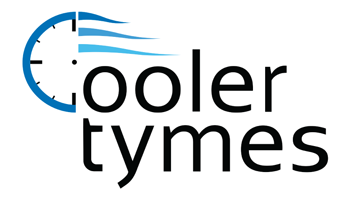
To combat increasing energy expenses and embrace sustainability, many homeowners are looking for ways to enjoy the same standards of comfort while reducing utility bills. With help from the Inflation Reduction Act, federal tax credits are available for upgrading to more efficient HVAC systems, such as air conditioners. These credits offer significant savings, as long as the homeowners select qualifying equipment and submit the right paperwork.
If you’re worried about a long, complicated process, we can share something that will help! Cooler Tymes LLC hopes this guide will provide all the information necessary to take full advantage of HVAC tax credits this year. Here’s what you should know.
Understanding the HVAC Tax Credits
These valuable tax credits for boosting your home’s energy efficiency are just one goal of the recent Inflation Reduction Act. With the higher cost of energy making an impact, helping more homeowners upgrade their equipment is always beneficial. The main intention of these credits is to reduce the cost of installing high efficiency upgrades. Two of note are the Residential Clean Energy Credit and the Energy Efficiency Home Improvement Credit.
But keep in mind, to claim your credits, you’ll need a completed IRS Form 5695. Additionally, this form is submitted within the same tax year any upgrades were installed, not purchased.
Maximizing Savings with the Energy Efficiency Home Improvement Credit
Through 2032, the Energy Efficiency Home Improvement credit empowers homeowners by offsetting up to $3,200 annually for making your home more energy-efficient. This equals 30% of the total project’s cost. Keep in mind that in order to get back the maximum amount, it means making severel investments. For example, you’ll save up to $2,000 for a new, high-efficiency heat pump. This can be paired with an additional $1,200 in credits for more projects in the tax year.
While new heat pump systems are a great use of the program, high-efficiency furnaces, air conditioners, boilers, and other HVAC systems are still eligible for this tax credit. You should confirm that your choice’s energy efficiency rating is sufficient to qualify.
Residential Clean Energy Credit
The Residential Clean Energy Credit offers 30% savings on a variety of residential clean energy equipment upgrades. Eligibility is restricted to homeowners seeking to update existing or newly constructed homes. While the Home Improvement Credit works primarily with utilities and HVAC systems, this credit is more about renewable energy sources like solar and wind energy.
Some specific items in this tax credit include the requirement that installation must occur between 2022 and 2032. But at the same time, homeowners can keep the excess credit to reduce future taxes. This is a great way to soften the entry into investing in clean energy.
Additional Qualifications for Energy Tax Credits
Because HVAC systems are one of the major reasons for high energy bills, these tax credits can guide you to the most energy-efficient options. But home energy efficiency can be improved in many other ways. Apart from the previously listed HVAC upgrades, {you could also choose|other eligible items include|you also have access to:
- Heat pump water heaters
- Electrical panel upgrades
- Upgraded electrical wiring
- Enhancements to insulation, air sealing, and ventilation
- Energy-efficient cooking appliances like stoves, cooktops, and ovens
- Heat pump clothes dryers
- High-efficiency water boilers
Just like with installing one or more HVAC systems, you’ll need to verify that your preferred make and model features the required energy efficiency ratings.
Maximizing Your 2024 HVAC Tax Credits: Top 3 Tips
While any one of those upgrades can boost home energy efficiency, a little planning will ensure they offer the most long-term benefits. Maximize your HVAC tax credits with these reminders:
- Conduct a home energy audit to identify impactful upgrades. Rely on professional HVAC assessments for crucial advice.
- Improve your home's thermal efficiency with better windows and doors.
- Look into rebates for clean energy projects from utilities. Renewable sources like solar, wind, and geothermal contribute to community power grid sustainability.
- Don’t forget financing options from local service companies, which can help reduce costs even more.
Secure Your 2024 HVAC Credits with Help from Cooler Tymes LLC
Partner with local HVAC professionals like Cooler Tymes LLC for eligible serves like energy assessments or new installation. Our seasoned installers will deliver everything you need for a more energy-efficient home.
